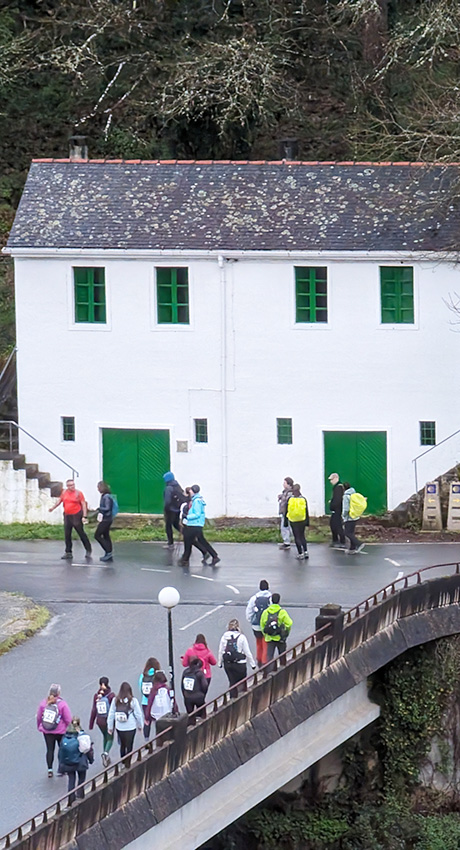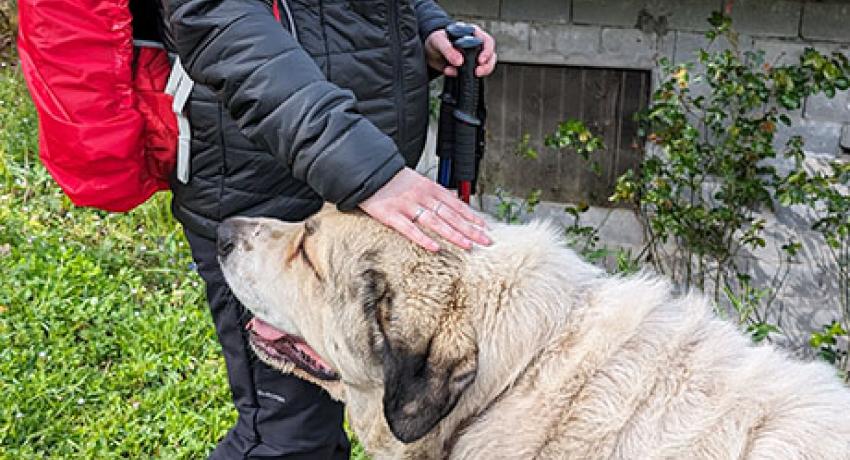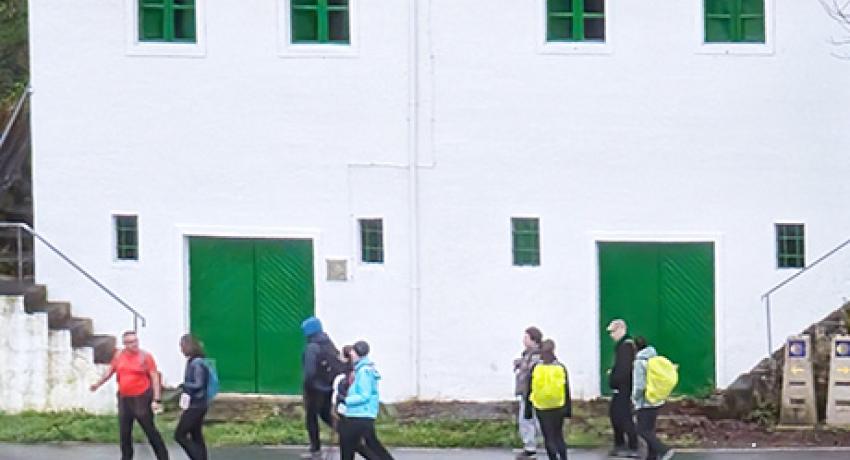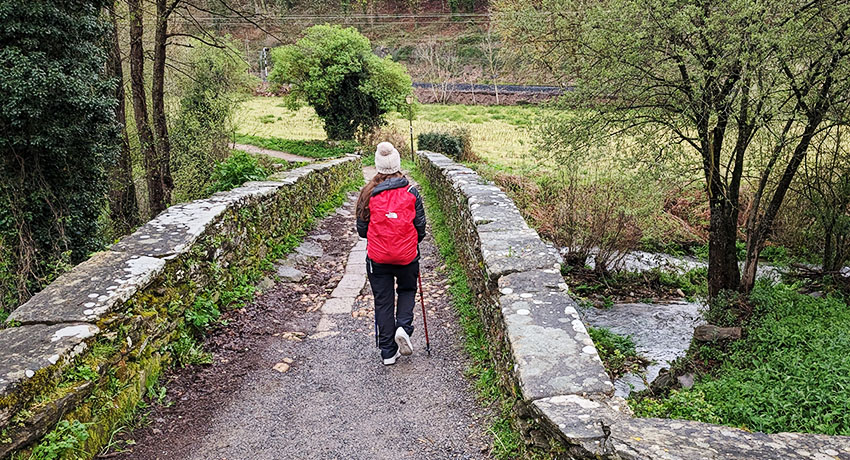Staying Safe on the Camino
Walking the Camino de Santiago is often described as a life-changing experience. The route is famous for its friendliness, hospitality, and longstanding traditions. Despite its reputation as one of the safest long-distance paths in Europe, it’s still wise to take basic steps to prepare for the trip. Below, we’ll discuss personal safety tips, share some statistics on crime along the route, and highlight best practices to ensure your Camino remains a positive journey.
Overview of Camino Safety
Low Incidence of Crime: Spain is consistently ranked among the safest countries in Europe. According to Eurostat, its overall crime rate is notably lower than many other major tourist destinations on the continent.
Large Pilgrim Community: In 2024, just under 500,000 pilgrims received the Compostela in Santiago, yet only a small fraction reported theft or minor incidents to local authorities. Most concerns involved lost or misplaced items rather than deliberate crimes.
Most pilgrims find the Camino to be a supportive environment where fellow travelers look out for one another. That said, personal awareness and basic precautions can help you avoid pitfalls.
Personal Safety Tips
Keep your Valuables Secure
Money Belts & Pouches
- Carry your passport, cash, and cards in a waist pouch or money belt. Do not put these in your luggage to be transferred.
- Use a waterproof pouch to keep documents (passport, credential) dry and secure. (Hike the Way includes a waterproof pouch in your Welcome Packet).
Stay Organized
- Photograph important documents (passport, insurance) and store copies in your email or cloud drive.
Don’t carry too much cash. Credit cards are widely accepted on the Camino, so we recommend 100 Euros or less in cash.

Watch Your Surroundings
Busy Areas & Urban Centers
- While villages along the Camino are generally quiet, larger cities like Pamplona, Burgos, León, or Santiago are busier so just be mindful around crowds.
- Stay attentive in busy train stations, plazas, or at crowded festivals, just as you would anywhere else.
Evening & Early Mornings
- Dawn or dusk walking is common, especially in hot weather. Use a headlamp or reflective gear if you share roads with vehicles and plan to walk during these times.
- If you prefer company during these times, many pilgrims you’ll meet along the trail coordinate early departures together.
Choosing Accommodations
Private Accommodations
At Hike The Way we rely exclusively on private accommodations—ranging from small hotels to guesthouses and rural homes. Lodging is safe, clean, and comfortable, ensuring you have a great place to rest each night. Common features include:
- Locked Rooms & Secure Entry: Unlike shared dormitories, private rooms come with their own keys or codes.
- Enhanced Privacy & Amenities: Many properties provide Wi-Fi, others have 24-hour reception or CCTV in common areas.
- Personalized Guidance: Smaller accommodations are often ran by local owners who can offer insider tips on local routes and safety advice.
Other Lodging Options
There are pilgrims that choose communal albergues with shared rooms and bathrooms, which are also safe as there is a strong pilgrim community spirit.
However, if you prefer extra privacy, confirmed reservations, or quieter environments, private accommodations may be more suitable for you. Arranging these in advance helps avoid the uncertainty of full hostels or shared sleeping quarters during peak season.
No matter your choice of lodging, being aware of your surroundings and securing personal belongings goes a long way towards a safe and enjoyable Camino.

Health & Well-Being
Physical Preparedness
Training
- Aim to walk 10–15 km (6–9 miles) per session in the weeks leading up to your Camino. Gradually increase distance and carry a loaded backpack to mimic real conditions.
Hydration & Nutrition
- Drink water frequently—public fountains are common but check signs to ensure water is potable.
- Carry energy snacks (nuts, dried fruit, bars) to maintain stamina on longer stretches.
First Aid & Insurance
Basic Aid Kit
- Pack blister treatments, pain relievers, bandages, and any personal medication.
- Keep these essentials accessible in the outer pocket of your backpack.
Insurance
- A travel insurance policy covering medical emergencies and repatriation is highly recommended.
- If you have pre-existing conditions, confirm coverage specifics and bring enough prescription medication.
Pharmacies
You’ll find pharmacies (farmacias) in most cities along the Camino where Spanish pharmacists play a role similar to doctors by offering advice and treatments for common health concerns.
- Although many items are available without a prescription, exact matches to American products can be hard to come by. The best approach is to describe your symptoms or needs, and the pharmacist will recommend the most suitable medication or remedy.
Navigating the Route
Markers & Maps
- Waymarking: Look for the signature yellow arrows and shell symbols along the way. Signs can be found anywhere from posts, to walls, the floor and even on buildings.
- Apps & Guides: Offline maps or apps can help confirm your route and locate nearby albergues, pharmacies, or emergency services. At Hike the Way we provide all our pilgrims with a personalized app for their Camino.
Weather Considerations
- Summer: Watch out for heat exhaustion. Start early, rest during peak heat, and stay hydrated.
- Spring & Fall: Rain and chilly mornings are common. Waterproof gear helps avoid hypothermia or blisters from wet socks.
- Winter: Some albergues close, and mountain passes can become dangerous. This season is best for experienced hikers.

Emergency & Local Contacts
- Emergency Number: Europe’s universal emergency line is 112.
- Pilgrim Offices: Local pilgrim offices can assist with stamps, directions, and lodging queries.
- Local Authorities: Police stations are found in most towns and cities along main routes. Don’t hesitate to report any incidents.
Mental & Emotional Well-Being
- Camino Community Spirit: Many pilgrims experience a profound sense of camaraderie. Connecting with fellow walkers can offer emotional support when challenges arise.
- Pace Yourself: Everyone’s Camino is unique. Taking a rest day or a shorter stage is perfectly acceptable if you’re tired or overwhelmed.
- Stay Connected: Check in with friends or family back home for peace of mind. Online Camino groups can also provide encouragement and practical tips.
The Camino de Santiago is widely regarded as safe with low crime rates and a supportive pilgrim community, but common-sense practices are still essential. Safeguard your valuables, prepare physically, and remain aware of your environment in busier towns. Whether you choose our vetted private accommodations or opt for communal lodging, a little preparation goes a long way to ensuring a rewarding and memorable pilgrimage.
Buen Camino!




